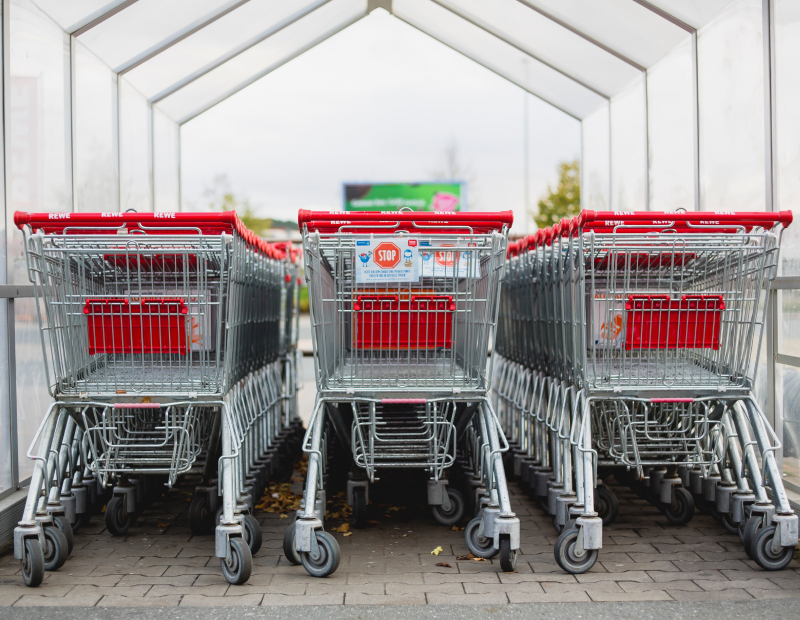As Stores Reopen, How Quickly Will Retail Recover?
Marcus & Millichap’s latest report details how the sector was forced to adjust to the COVID-19 crisis and how the reopenings may play out.

Image via Unsplash
Apparel stores, which saw a 97 percent drop in foot traffic from January to April, and dining, which experienced an 89 percent drop, are the retail sectors hardest hit by the COVID-19 crisis, according to a Marcus & Millichap report.
Beyond the Health Crisis: Retail Special Report explores the many categories of the retail sector and how each one is faring amid the ongoing pandemic.
Like the hospitality sector, the retail sector has seen many hardships including plummeting sales, bankruptcies and general uncertainty. But some states have begun to allow retailers to reopen their storefronts after having suffered significant drops in sales and foot traffic in the past few months. While some stores were allowed to restart operations, many of them are subject to strict health restrictions like social distancing and increased sanitation requirements. The COVID-19 crisis has also affected the retail sector’s construction pipeline and the investment capital that flows into the sector.
READ ALSO: J.C. Penney To Shed 29% of Stores Amid Retail Reckoning
With the reopenings, apparel stores saw a 109 percent rise in a period from April to May 10 and the dining category saw a 69 percent increase, according to Marcus & Millichap. Similarly, the stronger-performing retail categories like grocery, dollar and drugstores and mass merchandisers also saw a return to normal levels of customer volume. However, grocery stores also experienced a drop in customers with a 4 percent decrease from January to April that led into a 22 percent decline from April to May 10.
Despite the advent of stores reopening, some businesses may have a hard time adjusting to all the new regulations such as social distancing and increased sanitation requirements. While retailers need to ensure new health standards so customers feel safe enough to return, some stores may opt to remain closed if there aren’t profitable enough margins. On top of an overall lower amount of foot traffic, stores must incorporate many rules like creating a one-way customer flow, equipping all employees with gloves and masks, and eliminating shared-use utensils and buffets.
What to Expect for the Rest of 2020
With the retail sector seeing some recoveries, the Marcus & Millichap report offers four possible outcomes following the COVID-19 pandemic. The best-case scenario sees a short downturn and a strong recovery; retailers will be able to fully reopen by summer and pent-up demand will unleash the floodgates of returning customers, with suppliers and investors also resuming activity at pre-coronavirus levels.
However, in a scenario where the market sees an extended downturn with a weak recovery, Marcus & Millichap expects the number of vacancies to grow, while rents fall in the face of more defaults and bankruptcies. This scenario also projects that essential and discount retailers will outperform and that stores will focus more on online fulfillment.
COVID-19’s First-Quarter Impact
According to the Marcus & Millichap report, asking rents only increased an annual 2.2 percent to an average of $20.50 per square foot in the first quarter. However, retail asking rents are expected to fall between 7 percent and 9.4 percent by the end of 2020, breaking the eight-year streak of gains that has raised asking rents roughly 20 percent in total.
Construction of retail properties also saw a decline, with a drop to 8.3 million square feet in completed projects during the first quarter of 2020. According to the report, the decline represents the lowest quarter level since the year following the global financial crisis. In total, between 25 million and 35 million square feet is expected for 2020, down from the nearly 50 million square feet in 2019 and representing the lowest amount since 2000.
The dips in both construction activity and rents may have owners and investors reevaluating what they prioritize, according to Marcus & Millichap. With more vacancy expected, some retailers who are still in a strong economic position may explore expanding to higher-quality locations. Property owners who have tenants who were in good standing but are now struggling may also consider working with them as it would be easier to retain a reliable tenant than look for a new one in an underperforming market.
While most retailers have been negatively affected by the coronavirus pandemic, some sectors have become more reliable for investors. Categories like dollar stores, drug stores and auto parts stores have remained resilient, making them more attractive to investors, while others such as fitness centers, department stores and dine-in restaurants have fallen out of favor.







You must be logged in to post a comment.